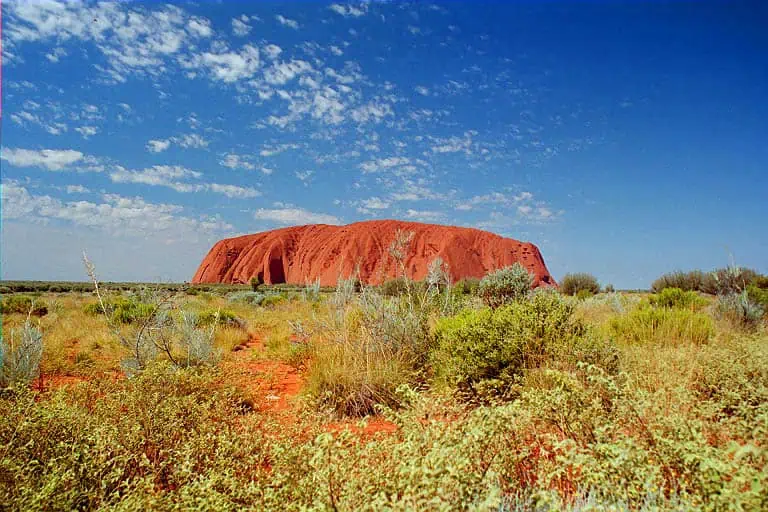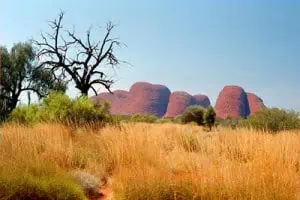Uluru Kata Tjuta
Uluru Kata Tjuta National Park (UKTNP) is one of those places every Australian should visit. Sometimes Mt Conner is mistaken for UKTNP but it is dwarfed by the majestic ‘rock’. My first visit was in 2001. Uluru made such an impression three years later I worked in the Park, staying on for another three years. Over this period, I saw Uluru in its glory, with many sunrises and sunsets, streaming rain and hidden in mist. I also made many friends among Anangu, the traditional owners of the land who graciously share this sacred place.
Uluru is 348 metres (1,141 feet) above the surrounding plain and more than 860 metres (2,821 feet) above sea level. In addition, it also measures 9.4 kilometres in circumference (5.8 miles).
In 1950 Ayers Rock, as it was known to tourists, became a national park. Eight years later, Ayers Rock and Mt Olga (Kata Tjuta) were excised from an Aboriginal reserve to form the Ayers Rock Mt Olga National Park. It took more than 35 years of campaigning for Anangu to be recognised as the Park’s traditional owners and given the deeds back to their land.
Anangu owns all of Uluru and Kata Tjuta and has leased it back to Parks Australia in joint management as a national park. The historic moment known as ‘handback’ happened in October 1985.
Summer is the hottest time at Uluru Kata Tjuta National Park; temperatures can reach up to 47 degrees Celsius (over 116 degrees Fahrenheit). Additionally, the park gets around 307 millimetres of rainfall a year. Temperatures can drop to -7 degrees Celsius (19 degrees Fahrenheit) on winter nights and mornings.
Uluru Kata Tjuta Entrance Fee
The standard Uluru Kata Tjuta National Park three-day pass is $38. Moreover, all visitors 18 years and over will have to purchase one of these passes to enter the park. Children and teenagers under 18 years go free. The standard pass is valid for three consecutive days.
The fee sounds like a lot, particularly if you have a large family. However, the cost of running and maintaining the park in this remote part of the world is high.
Things to Do
You will have a three-day pass which gives you ample time to walk, enjoy and be informed about many things in Uluru Kata Tjuta National Park. However, if you cannot stay three days, you can undertake most of the main activities in 2 days. Anything less and you will do yourself and the location an injustice.
- Watch the sunset over Uluru
- See the Aboriginal paintings
- Visit the Cultural Centre
- Walk around the base of Uluru
- Take the Guided Mala Walk to Kantju Gorge
- Do the Kuniya walk to Mutitjulu Waterhole
- Walk around part of the base of Uluru.
- See stunning views of Uluru and Kata Tjuta at sunrise and sunset.
- Take the Walpa Gorge Walk
- Visit Kata Tjuta for the valley of the winds walks
- View Kata Tjuta domes at sunset
- Do the short Kata Tjuta dune walk
Parks Australia maintains a great Uluru Kata Tjuta National Park website full of information to plan your trip.




